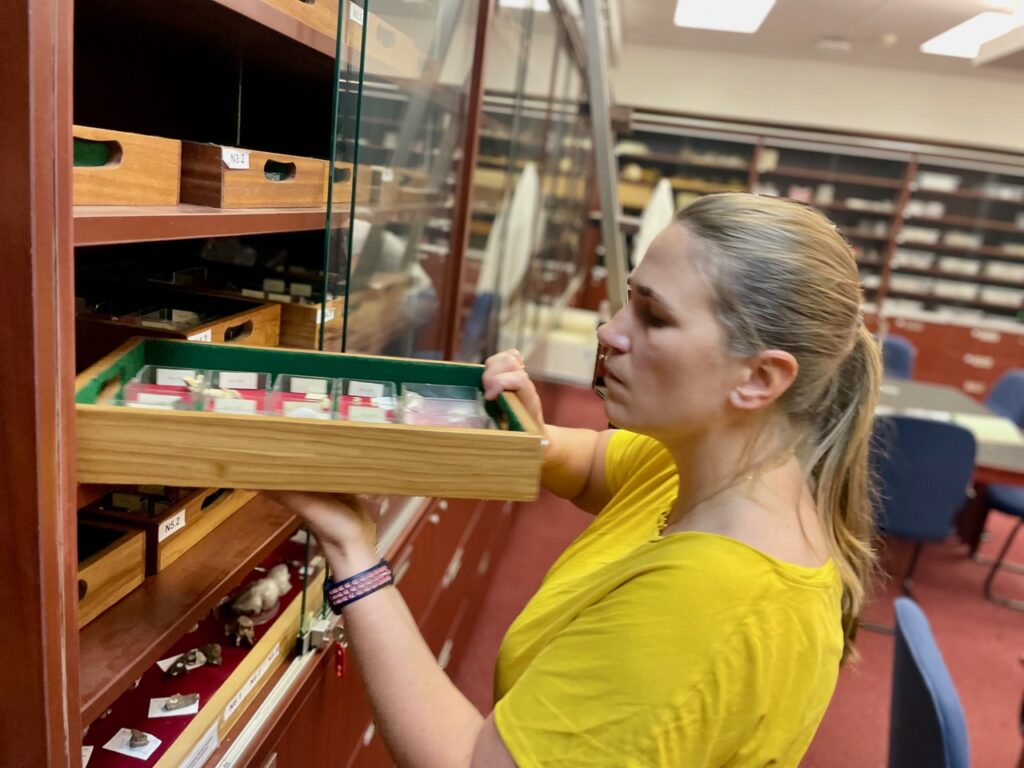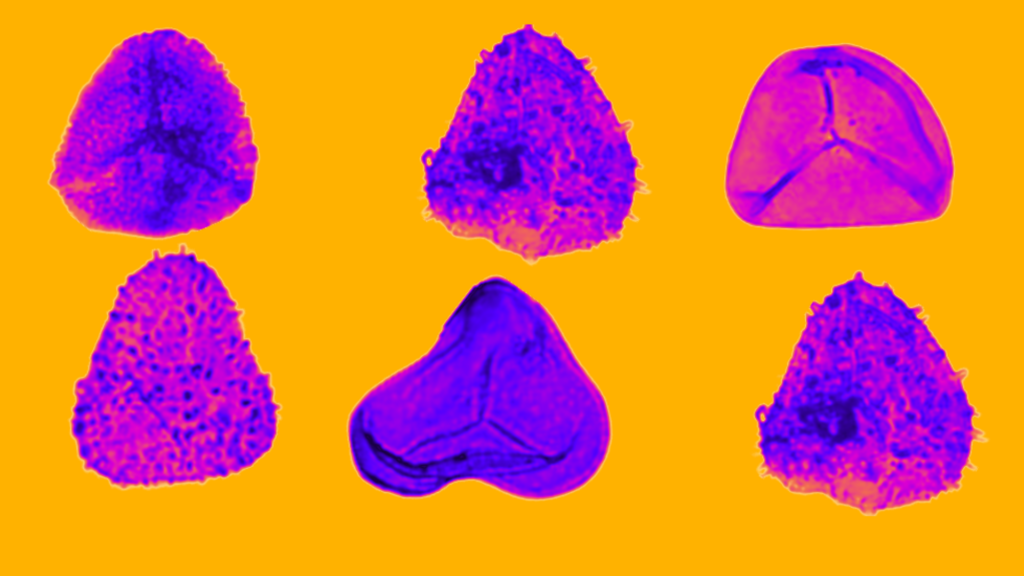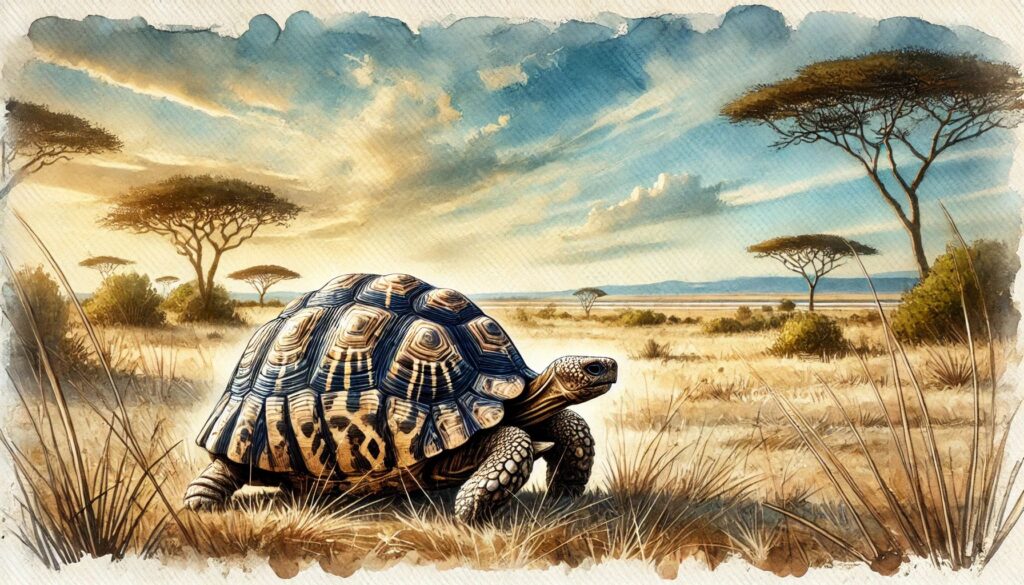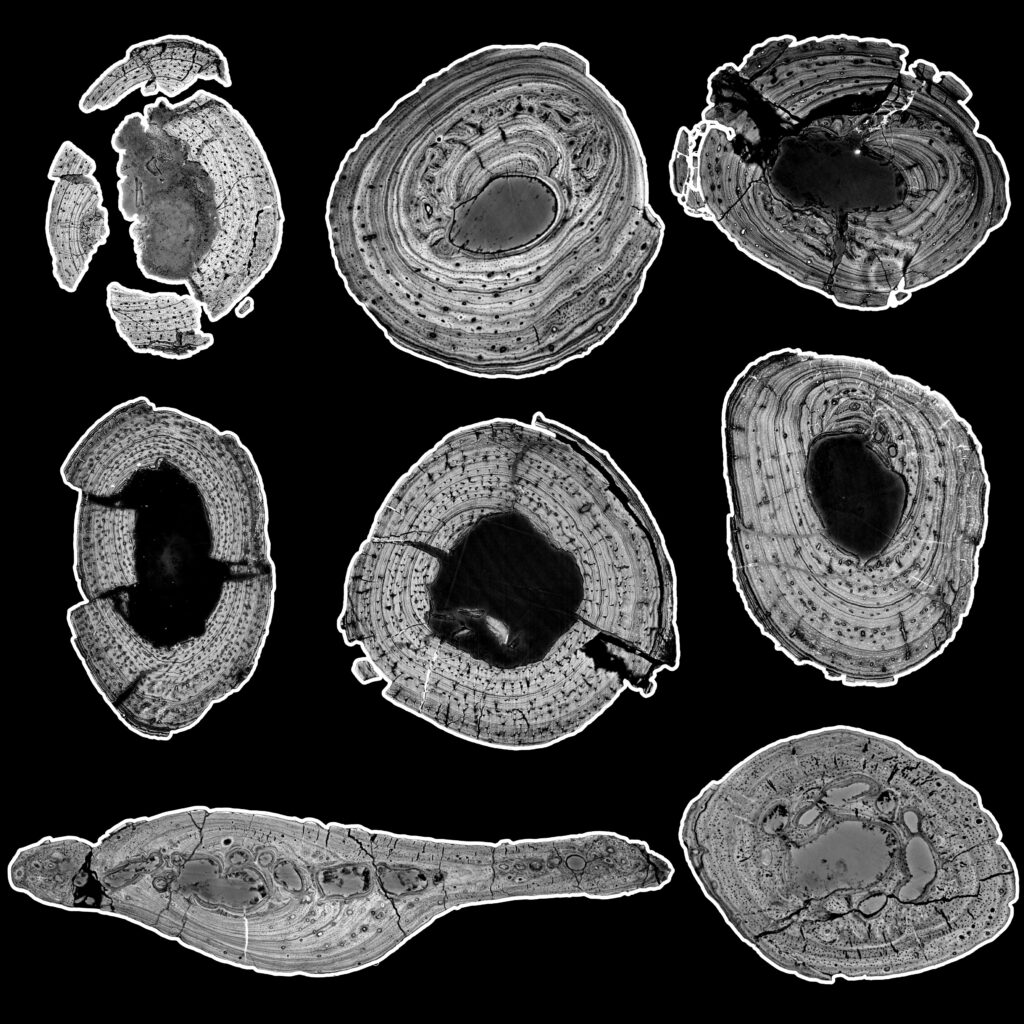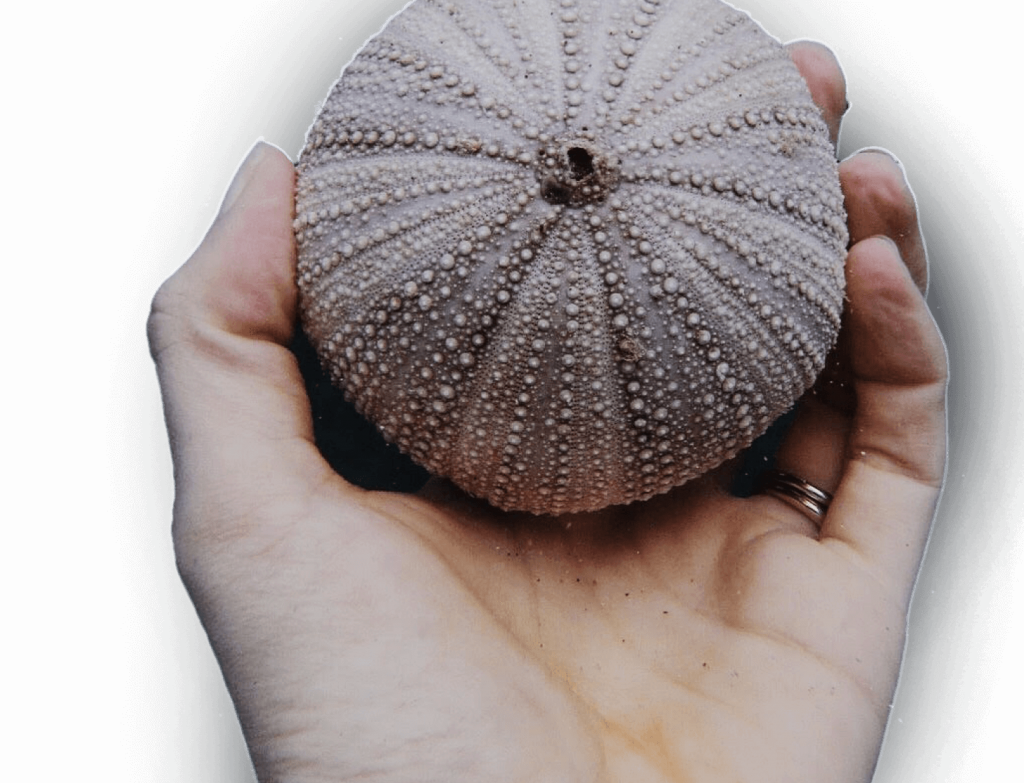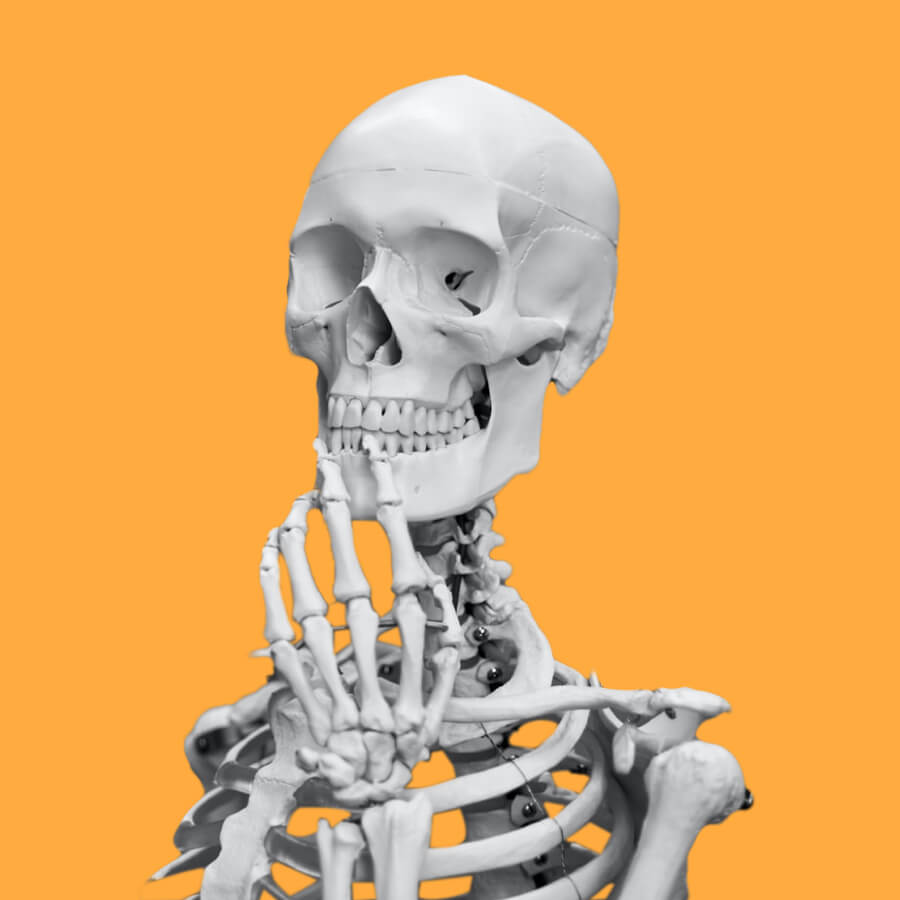Exploring the Fossils of the Free State
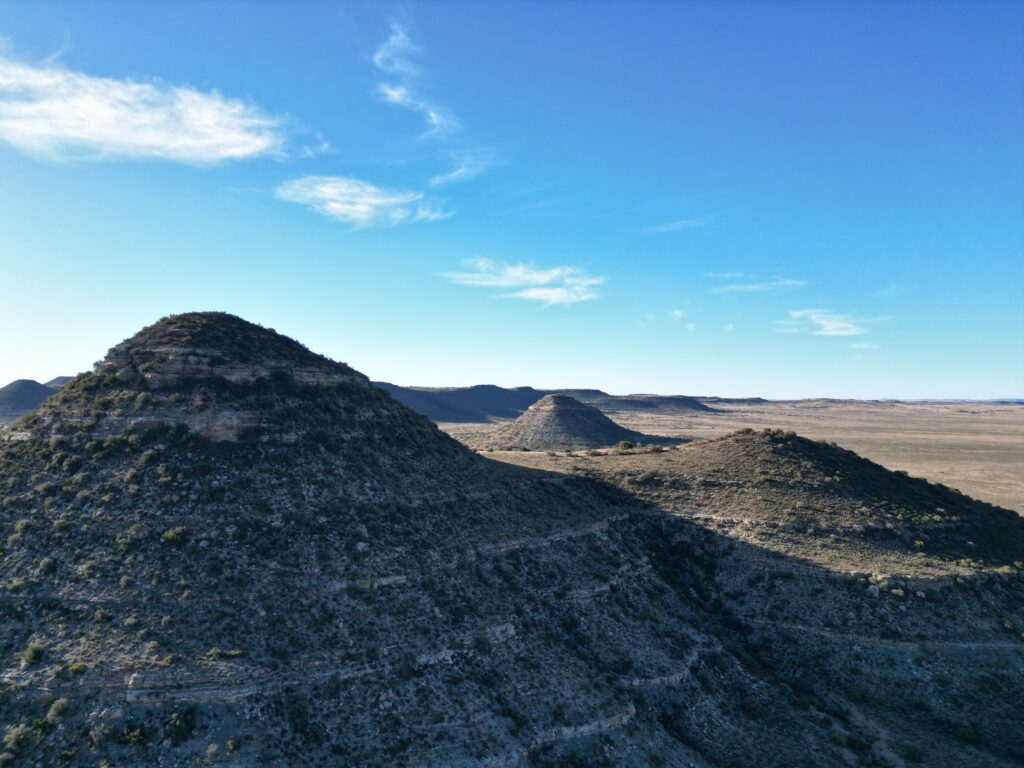
The two majestic rocky outcrops – in the background, Loskop and in the foreground, Spitskop shows off six different sandstone layers, each representing a different period in distant history. Photograph: Mariëtte van der Walt
Venturing into the fascinating Free State alongside a group of passionate palaeontologists, I embarked on a journey that would transport me back in time. As a zoologist with a taste for adventure, I had explored diverse ecosystems and encountered elusive and fascinating creatures, but this expedition promised to be unlike anything I had experienced before. Armed with my trusty Nikon camera, I eagerly joined Prof Jennifer Botha, Prof Roger Smith, Dr Scott MacLennan, MSc graduate Derik Wolvaardt, and PhD students Bailey Weiss and Brandon Stuart, ready to document their thrilling quest.
As our Toyota bakkie rambled along the bumpy dirt track on the sheep farm near Bethulie, the two rocky outcrops, Loskop ad Spitskop, rose majestically in front of us. These grand formations are nestled within the southern part of the Karoo Basin, home to the most complete terrestrial evidence of the Permo-Triassic mass extinction. This cataclysmic event, considered one of the greatest ecological disasters in history, witnessed the staggering loss of about 70% of species. Yet, amidst the devastation, it presented an extraordinary opportunity for palaeontologists to study the ever-changing populations of extinct tetrapods (four-legged animals) and decipher the intricate layers of stratigraphy.

With temperatures still below freezing, the team gets ready to set off for a day of fossil hunting on Loskop, seen rising from the landscape in the background. Photograph: Mariëtte van der Walt
While the winter sun struggled to break through a thick layer of cold-front clouds, anticipation filled the air as we unloaded the equipment on our first day. It was interesting to see the variety of equipment included in the field kit, including newspaper for packaging fossils, various sizes of plastic packets, masking tape, buckets and an extra-large roll of hessian. Wrapped up against the icy cold, we set off into the veld towards Loskop, equipped with rock hammers, brushes, and a thirst for uncovering the secrets of the past. The palaeontologists led the way, their keen eyes continuously scanning the landscape for any signs of fossilised treasures.

A mudrock in its original shape (left) and after being cracked open (right), revealing a fossil of a limb bone in the middle. Photograph: Mariëtte van der Walt
Over the days that followed, the palaeontologists taught me the art of observation and patience. They meticulously studied the rock formations and loose-lying stones, identifying layers and nodules that held the potential to reveal the remnants of long-extinct creatures. Hiking across these outcrops, we were mostly looking for rusty-brown rocks, called mudrocks, since these were likely hiding fossils. With skilled precision, they tapped at the rocks, revealing fragments of a world long gone. I was surprised by the number of fossils we found simply lying around, sometimes literally tripping over them!

A fossil we found lying in the veld, showed a vertebral column (on the left) and ribs (on the right). Photograph: Mariëtte van der Walt

A juvenile Lystrosaurus fossil, an ancestor of mammals that roamed the Earth approximately 252 million years ago. Brandon’s find reveals a complete specimen encased within this unassuming nodule, with only a tiny head (pointing to the right) and some other bones sticking out. Once meticulously prepared, a fully articulated skeleton will emerge!
Other fossils had to be meticulously excavated from the rocky hillside. As Baily and Brandon chipped away at the flaking shale, I looked on with interest, noting how they used their hammers and brushes to slowly reveal the fossil that had been entombed for millions of years. Though their efforts did not yield a complete specimen, the remnants we unearthed still offered a unique glimpse into the astonishing diversity of prehistoric life that once thrived in this very spot.

PhD students Bailey Weiss (left) and Brandon Stuart (right) excavating a fossil from the hillside on Spitskop in the Free State. Photograph: Mariëtte van der Walt
But the fieldwork was just one of the components of our exciting adventure. Back at the Bethulie Royal Hotel, the evenings were filled with animated discussions in front of a crackling wood fire. The hotel has the feeling of a much-loved home, filled with hundreds of pre-loved books, vinyl records, and various knick-knacks, each with its own history, instilling a feeling of comfort. While enjoying a delicious home-cooked meal, the team regaled me with their experiences and expertise, not only unveiling the intricate details of their research and the importance of their findings but also their love for their work. Their passion was contagious, igniting a flame of curiosity within the hotel manager, Anthony, and the other guests.

Driving back to the hotel after a successful day in the field, we enjoy a spectacular scene of golden Karoo veld and clouds in the setting sun. Photograph: Mariette van der Walt
In the end, my time in the field went far beyond capturing images. I learned that being a palaeontologist is not just about digging up fossils; it requires dedication and patience, a keen eye for detail, endless curiosity, and a profound love for unravelling the mysteries of life. These scientists bridge the gap between the past and the present, offering us glimpses into a world long lost but forever imprinted in the rocks and fossils we unearth. As we bid farewell to the Free State for now, the stories and encounters shared during our expedition remain etched in my mind and imprinted on my camera’s memory card. The palaeontologists’ unwavering dedication and their ability to find and breathe life into long-extinct creatures serve as a testament to the power of curiosity and the resilience of the human spirit. They remind us that the past is not lost, but patiently waiting to be discovered by those who are curious enough to explore its wonders.

To join our adventure, watch this short video about the trip here!
